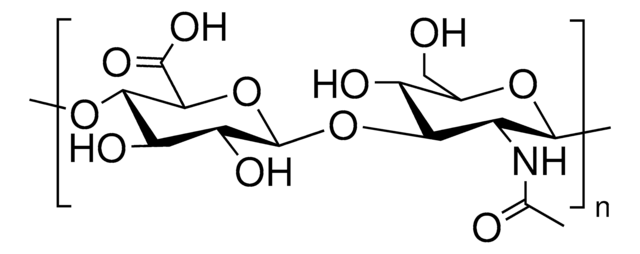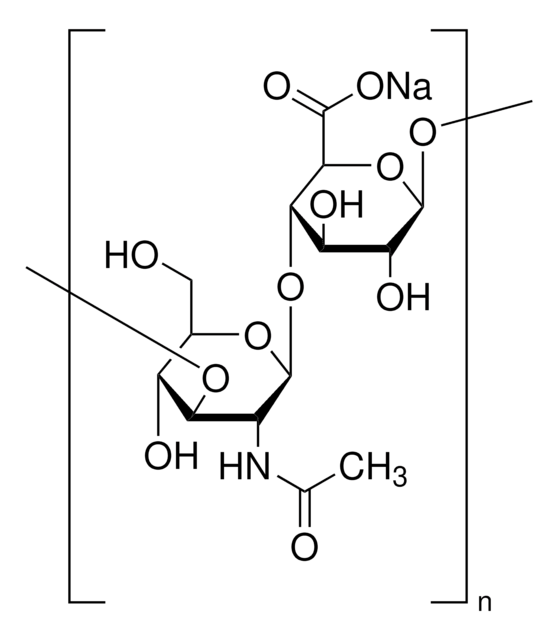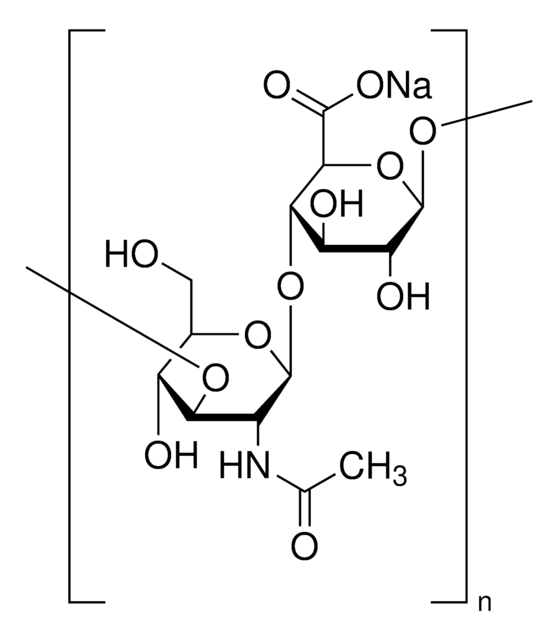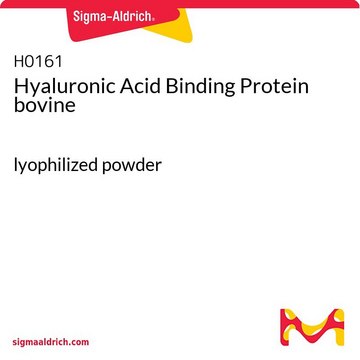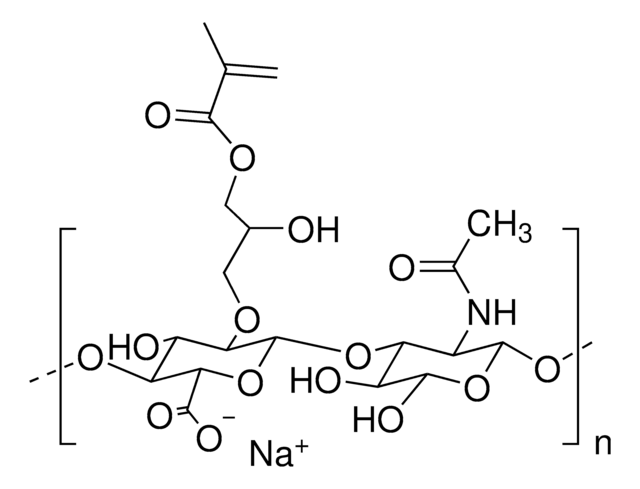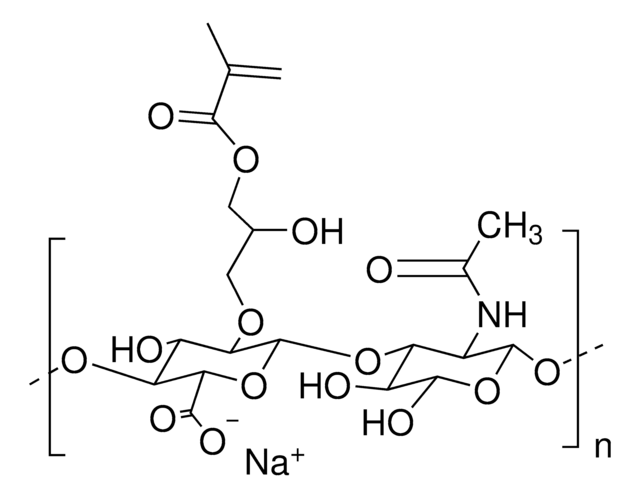924474
Hyaluronic Acid
Low Viscosity, Low endotoxin
Synonym(s):
3D bioprinting, HA, Hyaluronan
About This Item
Recommended Products
Quality Level
form
(powder or chunk(s) or fibers)
impurities
<10 CFU/g Bioburden
<100 EU/g Endotoxin
color
white to off-white
suitability
conforms to structure for NMR
storage temp.
2-8°C
General description
Application
- Cell migration
- Angiogenesis
- Viability
- Proliferation
Our low endotoxin HA is tested for both endotoxin (< 100 EU/g) and bioburden (< 10 CFU/g) levels, so you can choose which material is right for your research.
Storage Class Code
11 - Combustible Solids
WGK
WGK 3
Flash Point(F)
Not applicable
Flash Point(C)
Not applicable
Regulatory Listings
Regulatory Listings are mainly provided for chemical products. Only limited information can be provided here for non-chemical products. No entry means none of the components are listed. It is the user’s obligation to ensure the safe and legal use of the product.
JAN Code
924474-500MG:
924474-BULK:
924474-VAR:
Choose from one of the most recent versions:
Certificates of Analysis (COA)
Sorry, we don't have COAs for this product available online at this time.
If you need assistance, please contact Customer Support.
Already Own This Product?
Find documentation for the products that you have recently purchased in the Document Library.
Our team of scientists has experience in all areas of research including Life Science, Material Science, Chemical Synthesis, Chromatography, Analytical and many others.
Contact Technical Service